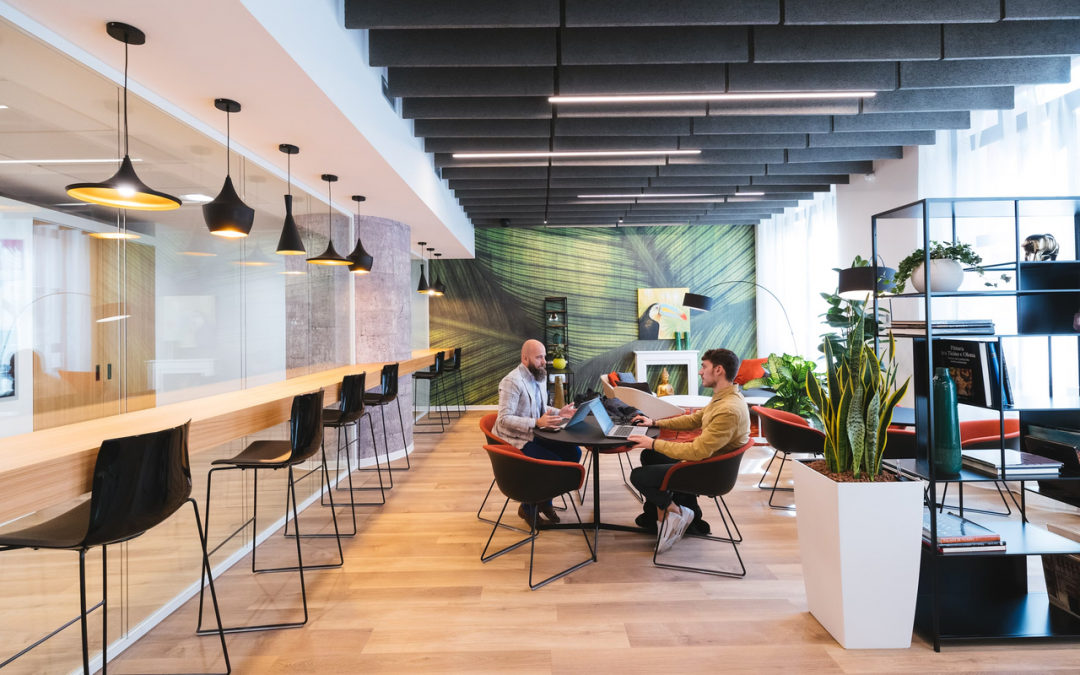Though the pandemic appears to be slowing as more people receive vaccines, more people discover the advantages of working from home. As a result, many businesses are establishing hybrid workplaces, boosting employee morale and productivity.
Employees appear to prefer having the option of working from home or in the office. As a result, some tasks are best completed at home, where employees may better manage their work-life balance. While some employees may be against the hybrid lifestyle, most are willing to embrace it. However, this creates some distinct working issues even with the hybrid work model.
1. Unconscious Bias
Managers are frequently biased against employees who work from home. Some studies have found that remote workers receive poorer performance scores on evaluations, fewer promotions, and smaller raises than their coworkers in the office.
This occurs because there is less face-to-face interaction. You don’t see the employee because they work from home most of the time if not all of the time. In some ways, hybrid model issues derive from the fact that remote workers suffer more due to their invisibility.
They look more dedicated if you’re in the office and working outside of “regular” hours, which may be part of your flexible working schedule. Even though they’re working the same amount of time, they’re there when no one else is.
The solution: Focusing on equality between in-person and remote performance is one method to address unconscious prejudice. Managers will require the necessary structures and remote working tools to deal with this. The hybrid model’s difficulties will only worsen and begin to crumble if equality is not achieved. Employees are likely to detect the link between their success and being in the office; therefore, they will accept fewer remote assignments.
2. Culture Dilution
With a hybrid model, the culture is at risk of being diluted. This indicates that employees are disillusioned with the organisation and that office life is the only thing on their minds. It has nothing to do with individuals who work remotely, which is one of the most challenging issues to resolve.
You must identify, establish, and embed the right hybrid work culture. However, it’s difficult to do so at the workplace, and it’s even more difficult in a remote setting.
The solution: The cultural issue is one of the most challenging issues in hybrid work. Since people can now work remotely, the definition of work has shifted. As a result, organisations must assess which cultural traits they want to preserve and foster and which ones they want to let rid of. This isn’t easy, and it might be advisable to enlist the help of a dedicated team to define the culture and develop a strategy for achieving it.
3. Seamless Connectivity
Staying connected with those in and out of the office is one of the hybrid work problems of working remotely. This must be simple for everyone to communicate quickly and effectively.
Finally, some meetings must be held in person, which causes challenges in a hybrid workplace. There should be no reason for everyone to come into the workplace. Video conferencing is usually the solution, but you’ll need the correct equipment for the job.
The solution: Hybrid workplace issues such as everyone’s connectivity are pretty simple to address. Investing in communication technologies is a good idea. You’ll be able to keep your productivity this way. You may also help with the seamless connectivity issue and avoid hybrid workplace issues by:
Assuring that the company’s video conferencing software is used in all meeting rooms. Remote workers can then participate and see everyone in the room. Having a video conferencing link be a requirement for all meetings. To achieve inclusivity and equality, plan for one person to work from home. Managers can get advice on planning activities for their employees at work and home.
4. Transparency
Transparent communication guarantees that both office and remote employees are treated equally. Employee morale is significantly impacted when there is a lack of honest and open communication. However, roughly 60% of remote workers are unaware of critical information because it was only shared in person.
The solution: Group-wide chat-like messages can quickly solve hybrid model problems or hybrid work obstacles like transparent communication. Companies should have rules and processes to ensure that the results are shared with everyone when it comes to informal and in-person communications. For example, using ProSpace newsfeed lets you send updates to your employees or a specific group wherever they are.
Communication doesn’t have to be inconvenient if you use the correct channels. To avoid the obstacles of working remotely, employees should be encouraged to talk as frequently as possible. This also eliminates the formation of silos between remote and in-office personnel.
5. Engagement
Employees that have good working relationships are more productive and engaged at work. Those who have a work best mate are more likely to be happy at work. Because of the hybrid model’s physical separation, it’s more challenging to build and maintain such working relationships.
The solution: While there are many hybrid workplace issues, most managers do not believe close working relationships are as crucial as they think. People must, however, feel connected and participate on a deeper level. Using “away days” is one approach to build such friendships. They produce beautiful moments and ties between employees that would otherwise be impossible to establish. These face-to-face meetings should not take place at work! Meet up somewhere fun and do something adventurous instead.
6. Employee Happiness
The majority of hybrid work problems may be solved by implementing new tools or software. When an employee works from home, their mental health may suffer. They may feel isolated from the rest of the team, resulting in fewer interactions with them. It would help if you guaranteed that staff are supported using a hybrid strategy.
The solution: While the problems of hybrid work are numerous, there are solutions to overcome them. However, when dealing with typical issues in a hybrid workplace, you might purchase additional software or solutions to resolve the problem. Unfortunately, this isn’t as simple for your employees’ mental health.
Allowing employees to select when they want to work is one option. They can work around their schedules at home, making them feel more at peace. It is equally critical that the management demonstrate concern and initiative. During check-ins, ask employees if they want to chat about their overall or mental health. Listen and see if you can suggest any adjustments that may be beneficial.
Another way to address this problem is to provide better health insurance. Employees will be more motivated to visit the doctor and take care of themselves in this manner. It should include mental health checkups so that people can talk about their problems, whether they are having difficulties at work or home.
7. How The Office Work
Companies must evaluate their office space as more individuals work fewer days per week in the office. It could be better to downsize the office and choose a smaller structure. You might also wish to have more extensive collaboration (meeting) rooms or break rooms to encourage individuals to talk while they’re at work.
Collaboration remains one of the most challenging aspects of working remotely, and it’s often the most significant factor in hybrid model failure. As a result, it’s critical to concentrate on the office space and how it may maximise your return on investment.
The solution: Because some people work from home every day, you’ll need to adjust how the workplace operates. These job obstacles are simple to overcome, especially if you have access to a flexible office. This means that your employees aren’t confined to the same desk. Instead, they can finish their task at any available workstation.
This is an excellent solution to the hybrid workplace’s many difficulties if you’re short on space. For example, you may eliminate cubicles and offices favouring more open places where individuals can sit and talk about work on comfy seats. However, to do so effectively, you must consider hoteling office space. Prospace features a hybrid operating system that can assist you to figure out which workstations are available and what amenities they have, such as printers, fax machines, and comfortable chairs.
Conclusion
Many companies are adopting the hybrid work model; however, many are unaware of the hybrid work challenges and issues that it presents. These hybrid work problems are typically motivated by the desire to maintain consistency for all employees, whether in the office or working remotely.
As a result, it’s critical to comprehend the operational challenges you and others may confront. From there, you can figure out how to fix the issues of a hybrid workplace so that it succeeds rather than fails.
Many hybrid model issues can be solved by using the right hybrid work software, creating a flexible workplace, and selecting appropriate communication tools. ProSpace is a robust system that can accommodate any hybrid work model. It’s easier to get everyone together, whether at home or work, by ensuring that your visitors feel welcome and giving a flexible method to work with Desk booking and meeting room booking.
Schedule a demo with us and learn how ProSpace works with different hybrid work models.






